New satellite images reveal activity at unidentified North Korean missile base

PHOTOS: New satellite images reveal activity at unidentified North Korean missile base
While the base at Yeongjeo-dong has long been known to US intelligence agencies and analysts, researchers at the Middlebury Institute of International Studies at Monterey told CNN that the images reveal construction on a new facility just seven miles away from the older site that had not been previously identified.
Hide Caption
6 of 11

PHOTOS: New satellite images reveal activity at unidentified North Korean missile base
"Satellite images show that the base remains active. Moreover, in the past year North Korea has significantly expanded a nearby facility that appears to be another missile base," the report states, noting that it is unclear whether the two bases are separate, or whether one is subordinate to other.
Hide Caption
7 of 11

PHOTOS: New satellite images reveal activity at unidentified North Korean missile base
Photos from the Middlebury Institute taken in October/November 2018 reveal North Korea has significantly expanded a key long-range missile base.
Hide Caption
8 of 11

PHOTOS: New satellite images reveal activity at unidentified North Korean missile base
While the base at Yeongjeo-dong has long been known to US intelligence agencies and analysts, researchers at the Middlebury Institute of International Studies at Monterey told CNN that the images reveal construction on a new facility just seven miles away from the older site that had not been previously identified.
Hide Caption
9 of 11

PHOTOS: New satellite images reveal activity at unidentified North Korean missile base
North Korea appears to have begun to expand the base significantly, starting with the construction of a new headquarters area in 2014. The layout of the new buildings bears a significant resemblance to the older headquarters area at Yeongjeo-dong.
Hide Caption
10 of 11

PHOTOS: New satellite images reveal activity at unidentified North Korean missile base
The site's unique location makes it a strong candidate to receive North Korea's newest long-range missiles, including those that can carry nuclear weapons and can strike the United States, Lewis and Schmerler said.
Hide Caption
11 of 11

PHOTOS: New satellite images reveal activity at unidentified North Korean missile base
New satellite images obtained exclusively by CNN reveal North Korea has significantly expanded a key long-range missile base located in the mountainous interior of the country.
Hide Caption
1 of 11
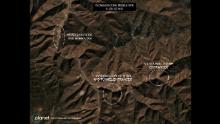
PHOTOS: New satellite images reveal activity at unidentified North Korean missile base
The satellite imagery offers evidence that the Yeongjeo-dong missile base and a nearby site remain active and have been continuously upgraded.
Hide Caption
2 of 11

PHOTOS: New satellite images reveal activity at unidentified North Korean missile base
The base itself is strung along a narrow valley. A headquarters area is positioned at the mouth of the valley, the images show.
Hide Caption
3 of 11

PHOTOS: New satellite images reveal activity at unidentified North Korean missile base
Further up the valley, North Korea was continuing to construct an extremely large underground facility in 2017. This facility was still under construction as of August 2018.
Hide Caption
4 of 11

PHOTOS: New satellite images reveal activity at unidentified North Korean missile base
There are five entrances to underground tunnels that may be used to store missiles, the report states.
Hide Caption
5 of 11

PHOTOS: New satellite images reveal activity at unidentified North Korean missile base
While the base at Yeongjeo-dong has long been known to US intelligence agencies and analysts, researchers at the Middlebury Institute of International Studies at Monterey told CNN that the images reveal construction on a new facility just seven miles away from the older site that had not been previously identified.
Hide Caption
6 of 11

PHOTOS: New satellite images reveal activity at unidentified North Korean missile base
"Satellite images show that the base remains active. Moreover, in the past year North Korea has significantly expanded a nearby facility that appears to be another missile base," the report states, noting that it is unclear whether the two bases are separate, or whether one is subordinate to other.
Hide Caption
7 of 11

PHOTOS: New satellite images reveal activity at unidentified North Korean missile base
Photos from the Middlebury Institute taken in October/November 2018 reveal North Korea has significantly expanded a key long-range missile base.
Hide Caption
8 of 11

PHOTOS: New satellite images reveal activity at unidentified North Korean missile base
While the base at Yeongjeo-dong has long been known to US intelligence agencies and analysts, researchers at the Middlebury Institute of International Studies at Monterey told CNN that the images reveal construction on a new facility just seven miles away from the older site that had not been previously identified.
Hide Caption
9 of 11

PHOTOS: New satellite images reveal activity at unidentified North Korean missile base
North Korea appears to have begun to expand the base significantly, starting with the construction of a new headquarters area in 2014. The layout of the new buildings bears a significant resemblance to the older headquarters area at Yeongjeo-dong.
Hide Caption
10 of 11

PHOTOS: New satellite images reveal activity at unidentified North Korean missile base
The site's unique location makes it a strong candidate to receive North Korea's newest long-range missiles, including those that can carry nuclear weapons and can strike the United States, Lewis and Schmerler said.
Hide Caption
11 of 11

PHOTOS: New satellite images reveal activity at unidentified North Korean missile base
New satellite images obtained exclusively by CNN reveal North Korea has significantly expanded a key long-range missile base located in the mountainous interior of the country.
Hide Caption
1 of 11

PHOTOS: New satellite images reveal activity at unidentified North Korean missile base
The satellite imagery offers evidence that the Yeongjeo-dong missile base and a nearby site remain active and have been continuously upgraded.
Hide Caption
2 of 11

PHOTOS: New satellite images reveal activity at unidentified North Korean missile base
The base itself is strung along a narrow valley. A headquarters area is positioned at the mouth of the valley, the images show.
Hide Caption
3 of 11

PHOTOS: New satellite images reveal activity at unidentified North Korean missile base
Further up the valley, North Korea was continuing to construct an extremely large underground facility in 2017. This facility was still under construction as of August 2018.
Hide Caption
4 of 11

PHOTOS: New satellite images reveal activity at unidentified North Korean missile base
There are five entrances to underground tunnels that may be used to store missiles, the report states.
Hide Caption
5 of 11

PHOTOS: New satellite images reveal activity at unidentified North Korean missile base
While the base at Yeongjeo-dong has long been known to US intelligence agencies and analysts, researchers at the Middlebury Institute of International Studies at Monterey told CNN that the images reveal construction on a new facility just seven miles away from the older site that had not been previously identified.
Hide Caption
6 of 11











Washington (CNN)New satellite images obtained exclusively by CNN reveal North Korea has significantly expanded a key long-range missile base located in the mountainous interior of the country, offering yet another reminder that diplomatic talks with the US have done little to prevent Kim Jong Un from pursuing his promise to mass produce and deploy the existing types of nuclear warheads in his arsenal.
The satellite imagery offers evidence that the Yeongjeo-dong missile base and a nearby, previously unreported site remain active and have been continuously upgraded, underscoring the reality of just how far apart Washington and Pyongyang are on the issue of denuclearization despite five months of sporadic talks.
While the base at Yeongjeo-dong has long been known to US intelligence agencies and analysts, researchers at the Middlebury Institute of International Studies at Monterey told CNN that the images reveal construction on a new facility just seven miles away from the older site that had not been previously publicly identified.
'The base remains active'
"Satellite images show that the base remains active. Moreover, in the past year North Korea has significantly expanded a nearby facility that appears to be another missile base," the report states, noting that it is unclear whether the two bases are separate, or whether one is subordinate to other.
The images indicate that North Korea was building an extremely large underground facility in 2017 and that this facility was still under construction as of August 2018.
"Construction on the previously unidentified site has continued even after the Singapore Summit" between Kim and President Donald Trump in June, Jeffrey Lewis of the Middlebury Institute of International Studies at Monterey, one of the analysts that identified the site, told CNN. "Whatever Kim says about his desire for denuclearization, North Korea continues to produce and deploy nuclear armed missiles."
The site's unique location makes it a strong candidate to receive North Korea's newest long-range missiles, including those that can carry nuclear weapons and can strike the United States, according to Lewis and his colleague David Schmerler.
US officials have long said they are not surprised by similar open source findings, but have declined to offer any additional response when other sites have been identified.
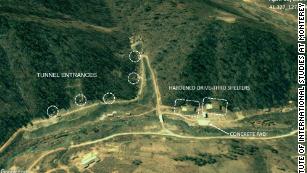
Credit: Middlebury Institute of International Studies at Monterey Photos from the Middlebury Institute of new developments of a North Korean missile site taken in October/November 2018.
"We watch North Korea very closely. We continue to support the diplomatic process. We will not discuss matters of intelligence," Pentagon spokesperson Lt. Col. Chris Logan told CNN.
The State Department declined to comment, saying it doesn't discuss intelligence matters.
While Kim is not violating any agreement with the US or South Korea by continuing to produce and deploy existing types of missiles, the identification of yet another active North Korean missile base comes at a time when some members of the Trump administration are declaring that Pyongyang has failed to uphold its end of the bargain thus far.
National security adviser John Bolton said Tuesday that Trump believes he should hold a second summit with Kim because the North Korean leader hasn't lived up to commitments he made during their first meeting.
"They have not lived up to the commitments so far," Bolton said at The Wall Street Journal's annual CEO Council conference in Washington. "That's why I think the President thinks that another summit is likely to be productive."
Bolton said the US would press ahead with a second meeting shortly after the start of the new year -- saying, "January, February" -- in the hope of making further progress. He said the Trump administration would not lift hefty economic sanctions against the regime until then.
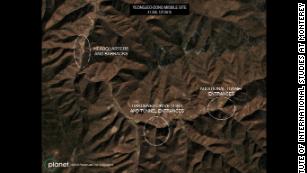
Credit: Middlebury Institute of International Studies at Monterey Photos from the Middlebury Institute of new developments of a North Korean missile site taken in October/November 2018.
Trump has often touted North Korea's lack of ballistic missile tests in recent months as a sign of diplomatic progress and said Kim's offer to dismantle some testing facilities signals the North Korean leader is serious about denuclearizing.
But while Trump maintains that Kim committed to fully denuclearize during their summit in Singapore this summer, the truth is that the meeting only yielded a vaguely worded agreement, in which the two leaders pledged to build a "lasting and stable peace regime on the Korean Peninsula" and to "work toward complete denuclearization" of the peninsula.
The Trump administration has also continued to insist on the elimination of North Korea's ballistic missile programs upfront -- a nonstarter for a nation that remains deeply suspicious of the outside world and would never leave itself strategically vulnerable simply for the promise of economic gain.
While closing test facilities would make it harder for North Korea to develop new types of warheads, that step would do little to prevent Kim from continuing to mass produce and deploy existing types of nuclear-armed missiles, as he publicly said in January he would continue to do.
"Those missiles are being deployed at bases throughout North Korea, many of which have long been known to outside analysts. Any denuclearization agreement would require North Korea to allow international inspectors to determine that these units are no longer armed with nuclear weapons," according to the report from Lewis and Schmerler.
"The Trump Administration has publicly promised to secure access to North Korea military facilities as part of any agreement," the report states.
Bolton's comments Tuesday underscored the lack of progress the US has made in moving North Korea closer to the complete, verifiable and irreversible denuclearization Washington is seeking, and the concessions it has been making to Pyongyang, even as Trump has stressed the warmth of his relationship with Kim.
Last month, Vice President Mike Pence told NBC News that the US will not require North Korea to provide a full list of its nuclear and missile sites before Trump meets again with Kim.
Washington and Pyongyang had been locked in a diplomatic standoff for weeks over which side would make concessions first. Analysts said that by relaxing its demands ahead of a second summit, the US may have blinked first.
Pence spoke days after the release of additional new commercial satellite images identifying more than a dozen undeclared North Korean missile operating bases, another sign that Pyongyang is continuing to move forward with its ballistic missile program.
One such facility is the missile base near Yeongjeo-dong, a site that has long concerned US and South Korean officials and the subject of the analysis of the new images released Wednesday.
In 2000, the United States sought access to this and other missile bases as part of an agreement to end North Korea's missile program -- and was rebuffed by Kim Jong Un's father, Kim Jong Il.
The base itself is strung along a narrow valley. A headquarters area is positioned at the mouth of the valley, the images show.
"Up through the valley there are a pair of hardened "drive-through" shelters that were covered with soil and had trees planted on them to disguise them. In front of the pair of drive throughs, there is a concrete pad that was also covered in dirt," according to the analysis by Lewis and Schmerler.
"There are five entrances to underground tunnels that may be used to store missiles," the report states. "Around 2010, North Korea constructed a pair of large drive-through suitable for large ballistic missiles. These shelters are similar to the ones seen at the older portion of the Yeongjeo-dong base."
CNN's Ryan Browne and Jennifer Hansler contributed reporting
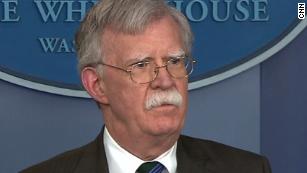
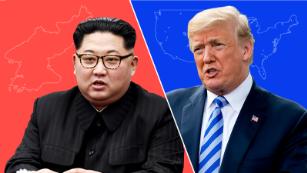
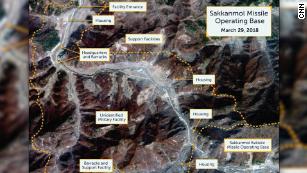
No comments:
Post a Comment